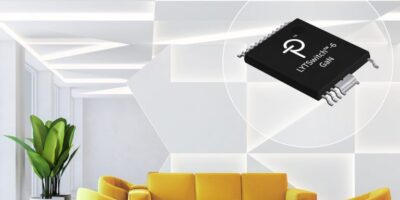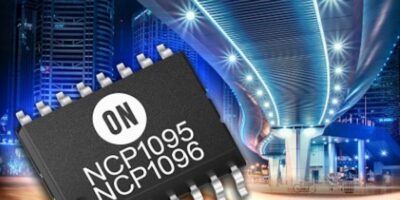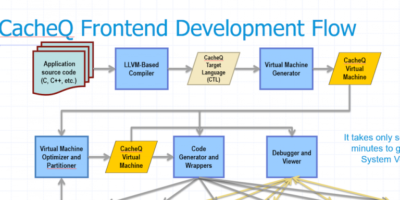The latest members of Power Integrations’ LED driver ICs, the LYTSwitch-6 family, use PowiGaN technology to enable designs that deliver up to 110W with 94% conversion efficiency using a simple, flexible flyback topology.
The high efficiency eliminates the need for heatsinks, reducing ballast size, weight and cooling airflow requirements, says Power Integrations. The 750V PowiGaN primary switches provide very low RDS (on) and reduced switching losses, increasing power conversion efficiency by up to three per cent compared to conventional solutions and reducing wasted heat by more than one-third.
LYTSwitch-6 ICs with PowiGaN technology employ lossless current sensing. They retain existing LYTSwitch-6 characteristics, such as fast transient response for cross regulation for parallel LED strings without the need for additional regulator hardware, and flicker-free system operation, says the company. This allows simple implementation of a pulse width modulation (PWM) dimming interface.
The LYTSwitch-6 ICs with PowiGaN technology enable designs up to 110W for smart residential and commercial fixtures and low-profile ceiling troffers. The high power density enables reduced height and weight, which is vital for space-constrained and sealed ballast applications.
The GaN-based LYTSwitch-6 LED-driver ICs are available now. A reference design (DER-801) is also available, describing a 100W three-way dimming LED ballast.
Power Integrations specialises in semiconductor technologies for high-voltage power conversion, with products that are key building blocks in the clean-power ecosystem, enabling the generation of renewable energy as well as the efficient transmission and consumption of power in applications ranging from mW to MWs.






